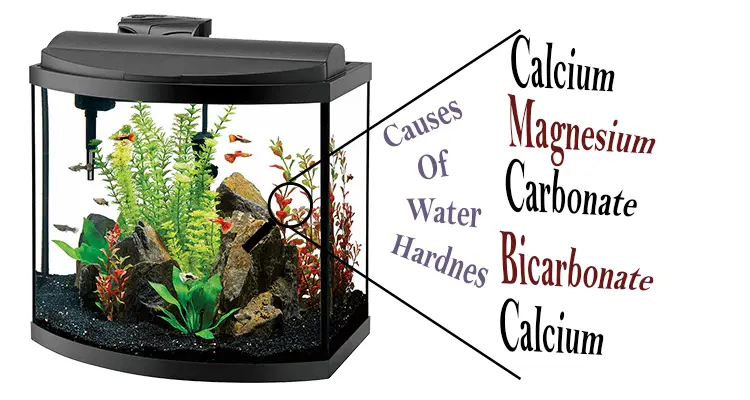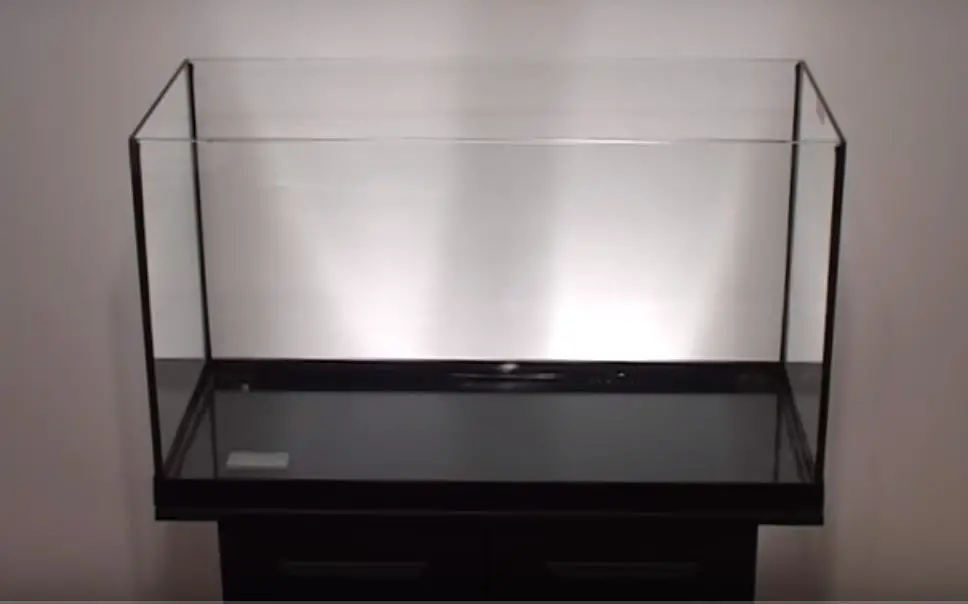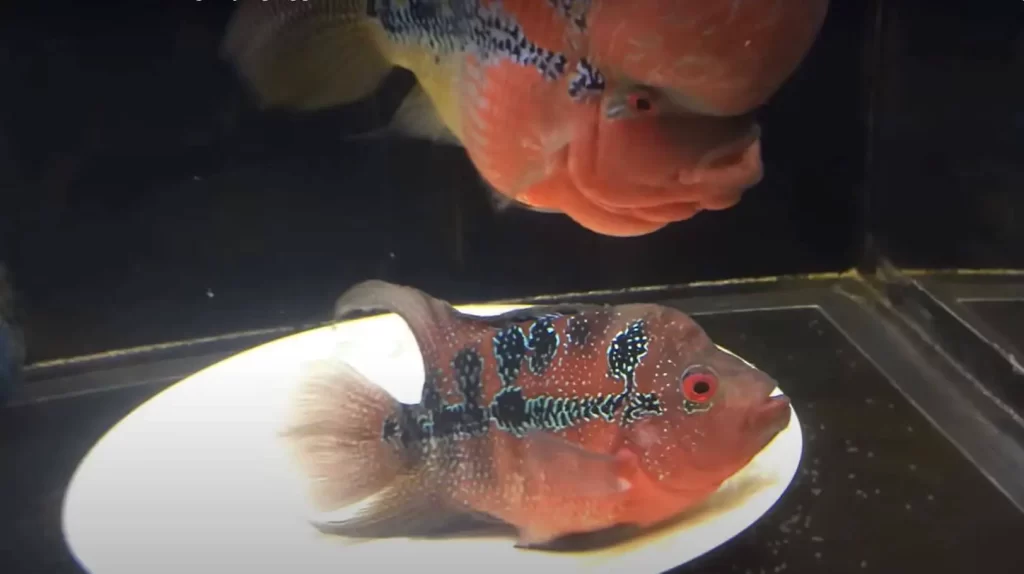If you happen to keep an aquarium, you also know that water chemistry, which includes water hardness, is an essential factor. However, many people, including beginners, tend to overlook the factor of water chemistry in their aquarium. As a result, they face problems in rearing fish. To breakdown the complex concept, let’s start with the water hardness in a freshwater aquarium where water should be neither too soft nor too hard. You will need to maintain aquarium water hardness to maintain the water parameter for your fish.
Different aquatic species have their requirement of water hardness. Maintaining the water hardness in an aquarium is no easy task since it is not constant. Different techniques like adding peat moss, mineralizers, corals, water changes, etc. can be done to maintain the water hardness in any aquarium. The same technique applies to naturally occurring water except for seawater, known as freshwater.
Here, we will discuss the basic water chemistry of hardness in a freshwater aquarium along with its importance in detail. Let’s get started on how you can maintain a healthy and safe environment for your freshwater aquarium.
Concept of Water Hardness
In the freshwater aquarium keeping hobby, we mostly focus on minerals like carbonate, calcium, and magnesium. Water hardness is simply the amount of mineral content like calcium and magnesium in water. Water is said to be hard if it has highly dissolved minerals, largely calcium and magnesium. Similarly, water is soft if it has less mineral content.
Water hardness is defined in terms of two parameters, namely GH and KH as:
In freshwater tanks, we test for GH because calcium and magnesium are similar in depletion (not the case in reef aquaria). The units of measure are parts per million (ppm) or degrees of hardness (dKH and dGH).
General Hardness
General hardness (GH) is also known as water hardness generally. It is the measure of dissolved salt in water, i.e., calcium, magnesium, and trace amounts of other minerals.
The concept is that water with a low GH is soft, and water with a high GH is hard. This is due to the low and high content of Magnesium and Calcium in the water.
Carbonate Hardness
Carbonate hardness (KH) is the measure of the free carbonates and bicarbonate ion content dissolved in water. KH has a direct relation to important components like carbon dioxide and pH value. It is a measure of alkalinity.
Did you know that? Tap water has a high GH, so it is hard most of the time.
Water source and Their Hardness
Regular tap water can be either hard or soft, depending on the location.
Water that is from well is often hard due to limestone content (calcium).
Other sources like rainwater and lake water are often soft.
pH and Relation of Carbonate Hardness(KH) to pH
pH is one of the most important parameters of freshwater tanks. The value of the pH indicates how acidic or basic the water is in a tank. It is measured on a scale of 0 – 14, with seven as the threshold. If water has a pH greater than 7, it is basic (alkaline), while a pH lower than seven is said acidic.
Alkalinity is directly related to the pH. This is because alkalinity is the ability to neutralize acid, and pH is the acidic content in a solution. Carbonate is a compound that significantly contributes to alkalinity. Hence, Carbonate Hardness (KH) tends to make the water more basic by neutralizing the acidic water and acting as a buffer.
The pH of water is constantly changing when we make water changes and during various other processes in the tank. Therefore, the GH of water must be maintained for the water to be soft or hard according to one’s requirement.
Fact: Hard water has high GH, KH, and pH and soft water have low GH, KH, and pH (i.e., mineral content is low). This means mineralized water is more stable in terms of resistance to acidic water.
How to Know if Aquarium Water is Hard?
Testing the chemical concentrate in aquatic biology is important. This is done because different marine life has different water conditions that they thrive in. Therefore one needs to check the water hardness of the water in an aquarium during the water changes. Moreover, you cannot determine if the water is hard or soft visually.
The best method to measure the water hardness of the freshwater aquarium is using a Testing kit. Testing kits are very affordable and easy to use. Testing using strip test and reagent test are popular methods of testing. All you do is collect a little of the aquarium water in another container and dip the strip od add a few drops of the reagent. The strip or the water will change its color. Compare to the scale provided as per the instructions in the kits.
Reminder: Never dip testing kits directly into the aquarium itself.
The water hardness is measured in terms of ppm, or parts per million. It is written as ppmGH or ppmKH for general and carbonate hardness. It can also be measured in the degree of hardness and is written as dGH or dKH.
What Happens if The Water Hardness is Not Right?
When hard water is heated, such as in a home water heater, solid deposits of calcium carbonate can form. When water hardness is not maintained for your aquatic livestock, there can be various consequences such as:
Death of a newly bought fish
Usually, when a new fish is brought from the store, the process is to use the floating bag method. In this method, you put the fish in a bag with water(water of the aquarium store) and let the bag float in the aquarium for a while before adding the fish to the aquarium.
If the hardness of the pet store water the fish has been in, and the water hardness of your aquarium water does not match, then your fish can get a shock. This shock is commonly known as osmotic shock, which is a slow killer. This will cause the death of the fish in a few days. Most often, the people will blame the unhealthy fish because the changes are not visible.
Stress and diseases
When the hardness of water is not right for the fish, it can cause a major amount of stress to the fish. This can lead to the aggressive behavior of the fish, which can include fin-nipping. Having stress causes the fish to develop freshwater fish diseases, which are explained in the article “Freshwater Fish Diseases.”
Plant survival
While most plants like Java moss can survive in hard water conditions, only a few plants can survive in soft water. If you happen to have a planted aquaria for that special plant, then the required hardness should be maintained.
Unsuccessful breeding
For successful breeding, water conditions and environment must strictly be maintained, which includes the water hardness as well. The female fish will not allow the male fish to fertilize the eggs or start the mating process. A slight change in the water hardness may result in an unsuccessful breeding process, leading to the death of the fry.
Acclimation: The Solution?
One of the major causes of death for new aquarium livestock is shock caused by abrupt changes in their environment like water chemistry and temperature. A solution to this is using the drip acclimation method.
Acclimation is the process of making the fish adapt slowly to the new environment; it is going to be put in. Drip acclimation process is a simple and easy method that takes less than 20 minutes and prevents your fish from stress.
Ideal Hardness in Freshwater Aquarium
There is no such thing as an ideal hardness level. This is because different species of plants, invertebrates, and fish require different hardness. While some species have a wide range of tolerance and some may not. Just like Guppies and Tetras go with Java moss and shrimps, it is crucial to find out which species go together in what conditions in your freshwater aquarium.
| Environment/Tank Type | Ideal Hardness |
| Tropical Fish Tank | 4-12 dGH |
| Shrimp Tank | 4-8 dGH |
| African Cichlid Tank | 12-20 dGH |
| Discus Tank | 3-8 dGH |
| Planted Tank | 3-8 dGH |
| Brackish Tank | 12-20 dGH |
| Axolotl Tank | 7-14 dGH |
| Pond | 4-12 dGH |
Here, the hardness is in terms of dGH, where 1 dGH is about equivalent to 17.9 PPM. Specific aquarium livestock will require a precise level of GH, so take into consideration them in detail.
How to Lower Aquarium GH – Decrease Hardness
Sometimes the water has a high hardness, which is found upon testing. Let’s get you started on ways you can lower the hardness of your aquarium.
Reverse Osmosis/Deionized water (RO/DI)
This is the process of purifying your water by 99%. If you perform this, the RO/DI water produced will have all minerals removed and has nil hardness. This is the purest form of water. After this, if you need to increase the hardness, then there are methods like dilution and remineralization explained below. The equipment for the process can be costly.
Dilution using distilled water
Distilled water, collected from the distillation process, has nil GH like RO/DI purified water. You can lower the hardness of a freshwater aquarium by having a mix of tap water and distilled water until your required level of hardness is reached. You can find distilled water in the market easily.
Adding peat moss
Peat moss is basically sphagnum moss. This can be added as a substrate for certain fish to lay their eggs on as well. Peat moss combines the minerals in water such that it attacks the carbonates, thus, lowering the hardness.
You can put peat moss in stocking and boil until all the dirt is out. After this, rinse the leftovers and dip the stocking with clean peat moss into the water. This will lower the hardness in water by a certain level. However, this is not the most guaranteed and practiced method, as adding new elements in and out increases the risk of diseases.
How to Raise Aquarium GH – Increase Hardness
After you have had a test on your water, if the results are low, you’ll need to raise the GH bar. Here’s how you do so:
Performing a water change
GH gets lower overtime because plants and fish utilize the GH, which is minerals to grow. So a natural solution is to perform a water change. When you perform a water change, your aquarium water will be at balance after testing.
You can simply add tap water in most conditions after the usual procedure since tap water usually has high hardness.
Adding a Remineralizer
Remineralize basically adds minerals to your water. Some people prefer purifying water to a good extent, which is by osmosis, and the product is RO/DI water. This water has almost nil content of hardness. Hence for such water, adding a fish and plant safe remineralize like Seachem Replenish, which is commonly available in the market.
Adding Wonder shells
Wonder shells, popular among beginner tanks, actually contain essential elements like magnesium and calcium. Easy to use, wonder shells are used for conditioning your tank. It is definitely useful for reducing chlorination and cloudiness formation.
The way it works is by dissolving slowly to release elements slowly, which help raise the GH.
Tip: Perform a test separately before adding wonder shells.
Adding crushed coral
Corals are made up of calcium carbonate. When mixed with water, it acts like a slow dissolver which releases Calcium and Carbonate to water. These are absolutely organic and can be added in any way you like, be it with your filter media or direct substrate.
Tip: Adding corals increases the acidity of water i.e., pH alongside KH. Therefore you must have livestock that can adapt to the hard water with high pH, like Cichlids.
Mineral Aragonite
Aragonite is essentially made up of calcium carbonate. They are easily available as a rock as well as sand. Also known by the name Cichlid sand, this releases calcium as well as carbonate in the water. Hence increasing the KH and pH both at the same time, Aragonite is popular for aquatic livestock like cichlids.
You can add this in the instructed amount in your aquarium, and it will dissolve away like wonder shells and corals.
Common Plants and Fish for Soft Water and Hard Water
Since all the concept of soft and hard water has been cleared, let’s clear this topic as well.
Fish like Tetras, Barbs, Corydoras catfish, and Angelfish are all originally soft water fish. However, these fish have a high tolerance and are adaptable. Hence they are successfully kept in hard water community tanks.
Well, there are hard water plants like Azaleas, Caladiums, and Begonias that you can keep in your tank too.
Hard water fish include Livebearers, Central American cichlids, and Rift Valley cichlids. Keep in mind that these three genera can only be kept in hard water. Livebearers such as Guppies, Mollies, Platies, and Swordtails, Paradise Fish, and Brackish fish such as Archers, Monos, and Scats are hard water fish.
Java fern and Java moss, Annabias, Sword plants are good company for hard water fish.
And yes, if your fish has harsh water hardness changes, then it can kill the fish.
Fact: Java moss and fern can be used for fish to lay their eggs safely.
Conclusion
Water hardness is a prominent factor in water chemistry makes a huge difference in the aquatic environment. One needs to maintain the right water “hardness” or “softness” to have a healthy thriving.
I hope this article has made it easy to understand basic water chemistry, and you will be able to safely adjust it. I strongly believe that knowing the basics will greatly help improve in rearing healthy aquatic life.
Reference
Image Credit:
- https://creativecommons.org/licenses/by-nc/4.0/






